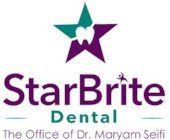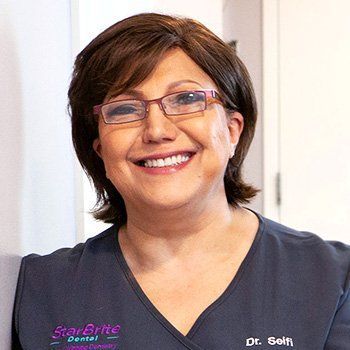Understanding Virtual Dentistry: Everything You Need to Know
Using virtual healthcare services is growing in popularity around the country. Now, with COVID-19 on the scene, there has been a recent surge.
When WHO declared coronavirus a pandemic , using these virtual services became a must. Social-distancing dictates the importance of reducing your contact with other people.
You already know you can visit your doctor online. Now, with virtual healthcare, you can schedule appointments with your general dentist or dental team, too. If this sounds strange to you, don’t worry, you aren’t alone.
Understanding virtual dentistry may seem impossible at first. The information here will shed some light on this now popular service.
Remember, understanding what a service has to offer can help you decide if it's right for you. Teledentistry isn't right for every situation. But, it's beneficial in many situations.Understanding Telehealth
Teledentistry falls under the umbrella of telehealth. Telehealth is a type of communication technology. With this, you can receive:
- Medical support
- Public health services
- Healthcare solutions
You get all this from a distance. It eliminates the need to go to the dentist's office.
This service combines wireless communications and streaming media and video conferencing. The purpose of this is to provide public health services with an extra level of medical care.
It is important to note there is a difference between telemedicine and telehealth. Telemedicine only refers to remote clinical services.
Yet, telehealth includes a much larger spectrum of healthcare services. This includes an array of non-clinical services such as education, training, and administration.
What is Teledentistry?
Teledentistry falls under the umbrella of virtual health care. It's an innovative service in the digital era.
Virtual dental care and teledentistry are terms that mean the exact same thing. You may hear them used together.
This service improves access to dentistry services and care for patients. This is especially important for those who live in outlying areas. Dental services aren't readily available everywhere.
With the COVID-19 crisis, it is even more important because of the “stay at home” or social distancing order. With teledentistry, patients receive an array of solutions.
They deliver all these through video conferencing services or over the telephone. This service allows patients to communicate with their dental team. You can receive this care without going to the office.
What's especially helpful is you get service when you need it. On-demand care is now a must in this instant gratification society. It also allows you to gather the needed information first.
Telehealth vs. Teledentistry
Teledentistry is a sub-field in the larger telehealth field. This is like how dentistry is a sub-field of medicine and healthcare.
Both services occur online over a video conferencing service. The people involved in this include the healthcare professional and the patient. Make sure the dentist uses secure, encrypted video feeds for the visit.
Telehealth and teledentistry consultations need a video and audio connection. This allows the parties involved in the call to communicate in real-time. The difference in these services is that teledentistry only includes a dental consultation.
Meeting the Growing Demand
The demand for remote dentistry services isgrowing. Approximately 78% of patients in the U.S. have stated they want to use thesetypes of services.
This is particularly true for those living inoutlying or rural areas. These individuals may find it expensive to go tonearby towns where dental care is available. Even the cost of theseservices for those without insurance is also prohibitive.
With teledentistry, there is a trend towardmore affordable care. There is no travel cost involved. It eliminates thehassle related to finding the right medical professional.
Being able to consult with professionals fromyour home is desirable. It has also opened a new realm of opportunity forhealth care providers and patients. These services are now more convenient andaccessible.
These are crucial factors to consider. Thisalso offers an alternative to visiting an urgent care center or emergency room.These are usually more costly experiences. The demand for teledentistry athospitals and urgent care centers is also growing.
This ensures patients canreceive specialist treatment at a reasonable cost. This is preferable overtreatment from a doctor in the emergency room.
Teledentistry Upgrades: What to Know
Teledentistry services aren’t new. It is a service that is evolving. Teledentistry is something that has been around since the invention of the telephone.
Now, the technology used is much more innovative and intricate. Dental professionals can engage in video conferencing consultations. This helps make the visit more in-depth.
The service allows a dentist to diagnose a dental problem online. They can recommend an in-person visit if needed. Often, this in-person visit isn’t even possible for a day, week, or more.
You can use your phone, laptop, or tablet to talk to a dentist. The dentist will use the information to decide what happens next. This makes it a convenient option for both parties to assess the issue ahead of time.
If the patient requires antibiotics or another appointment, this is particularly important. They can receive what they need before being able to see their dentist in-person.
Teledentistry in the Age of COVID-19
Information from the CDC, WHO, and even the President of the United States is clear. It is necessary to engage in social distancing to prevent the spread of the virus. Many of COVID-19’s early symptomsfeel and look like the flu or a common cold.
There is no question so many people are still wondering if they could have this virus. Using telemedicine lets you speak with and even see a doctor without leaving home (or your bed). You can continue social distancing while speaking with a health professional.
Keep in mind, telemedicine and teledentistry, uses innovative technology. It makes diagnosing and treating conditions online possible.
These healthcare professionals may use pictures, videos, and more.
Why Avoiding the Office is a Smart Idea
What do you have to do when going to the doctor? You must leave home, go to the office parking lot, walk in the office, and check-in.
You may have to wait in the waiting room, with others, before seeing the dentist. You may also need to interact with the receptionist.
Think about all the opportunities you may have to encounter someone. Each encounter is an opportunity to contract or spread coronavirus.
A much smarter option is to stay at home while still getting the care you need. This eliminates the possibility of getting or spreading the virus.
By using the technology in place, you can do your part and help reduce the spread of the virus.
Even after the pandemic has passed it doesn’t mean you have to stop using this convenient technology. These virtual dental services allow you to collaborate and communicate with your dentist. This is possible through the use of computers, phones, and more at any time.
Save Vital Resources with Virtual Health Technology
Usually, a virtual dental consultation doesn’t take as much time as an in-office visit. This means medical professionals can save time. While this is always important, right now, it’s even more important.
Some forecasts have shown the huge impact of COVID-19. It is stretching every sector of the healthcare industry. It may use up all the resources and time dentists have.
Virtual healthcare reduces some of this strain. It can help free up resources for those who are more in need.
Televisits are much faster. Some patients claim they only take a fraction of the time of an in-office visit.
Teledentistry in this Uncertain Time
This is an unprecedented time. Things are evolving and changing, sometimes by the hour. This makes every improvement even more important.
Using virtual appointments with your dentist means you can stay safe. All this is possible while still getting the treatment and attention you need.
No one should ignore their dental health. Failure to seek care and treatment when a problem occurs can lead to more serious issues. With the consultation, you get the treatment and care needed.
What to Expect During Your Teledentistry Consultation?
By now, you have a good idea of what teledentistry is and why it is important. What you may wonder is how it works.
The teledentistry system allows your dentist to see your records online. Using the information, your dentist can advise on your possible next steps for treatment. In some cases, you won’t see the dentist in person at all.
This reduces the risks of catching or spreading coronavirus. It also helps reduce crowded offices and long wait times.
The Consultation
Teledentistry allows you to see and talk to your dentist through video. The dentist may also get your health information through this online connection.
The remote visitallows you to seek care if you are unable to get to your dentist’s office. The process involves the use of electronic dental records. These include:
- Recordings of the condition of your teeth
- X-rays, if available
- Your general health
- Photographs
All this information allows your dentist to make a proper diagnosis.
The goal of the consultation is to get recommendations for your dental care needs.
During the consultation, the dentist will review the information they have received. They will make a record of what they see and what you discuss with them.
Sometimes, they recommend an in-person visit. It depends on a person's symptoms and condition.
Alternatives, Benefits, and Risks
Teledentistry allows you to get dental care without going to the office. The risk is the need to go to the office for a follow-up visit.
There is an alternative to a teledentistry consultation. It is to schedule a face-to-face visit with your dentist. Remember, this is still a new service. They do not guarantee the results.
Consider the pros and cons of this visit. If you have a more serious problem, going to a dentist in-person may be best.
While this is true, teledentistry can help after-hours, on the weekend, and on holidays. These are times when most local dental offices remain closed.
Confidentiality Considerations
HIPPA law applies to teledentistry. Look for the dentist's "Notice of Privacy Practices" before scheduling an appointment. Note, this may go by other names.
Without this agreement, issues may arise. If you cannot find it on the website, ask the service provider. Law requires they provide this to you.
Your Rights
You can choose not to take part in the teledentistry consultation. This includes before or during the appointment. If you cancel the call or appointment, you won't pay.
If you decide not to take part, it won’t affect your ability to seek treatment or care later. You can also seek care or treatment from any dentist after the consultation.
Understanding Virtual Dentistry: Now You Know
Understanding virtual dentistry isn’t as challenging as it may have seemed at first. It is like any other telehealth services available, only for the mouth and teeth.
While a virtual consultation for your dental needs may seem unusual, it is a smart move. This is especially the case with the recent COVID-19 pandemic. Staying safe is a top priority.
Are you ready to learn more about virtual dentistry or to request a virtual consultation? If so, contact us. Our team will help you get the dental care you need.
Our team will provide you with the quality treatment needed for an affordable price. Being informed is the best way to ensure you get the dental care results you want and need. This is true even during the COVID-19 pandemic.



